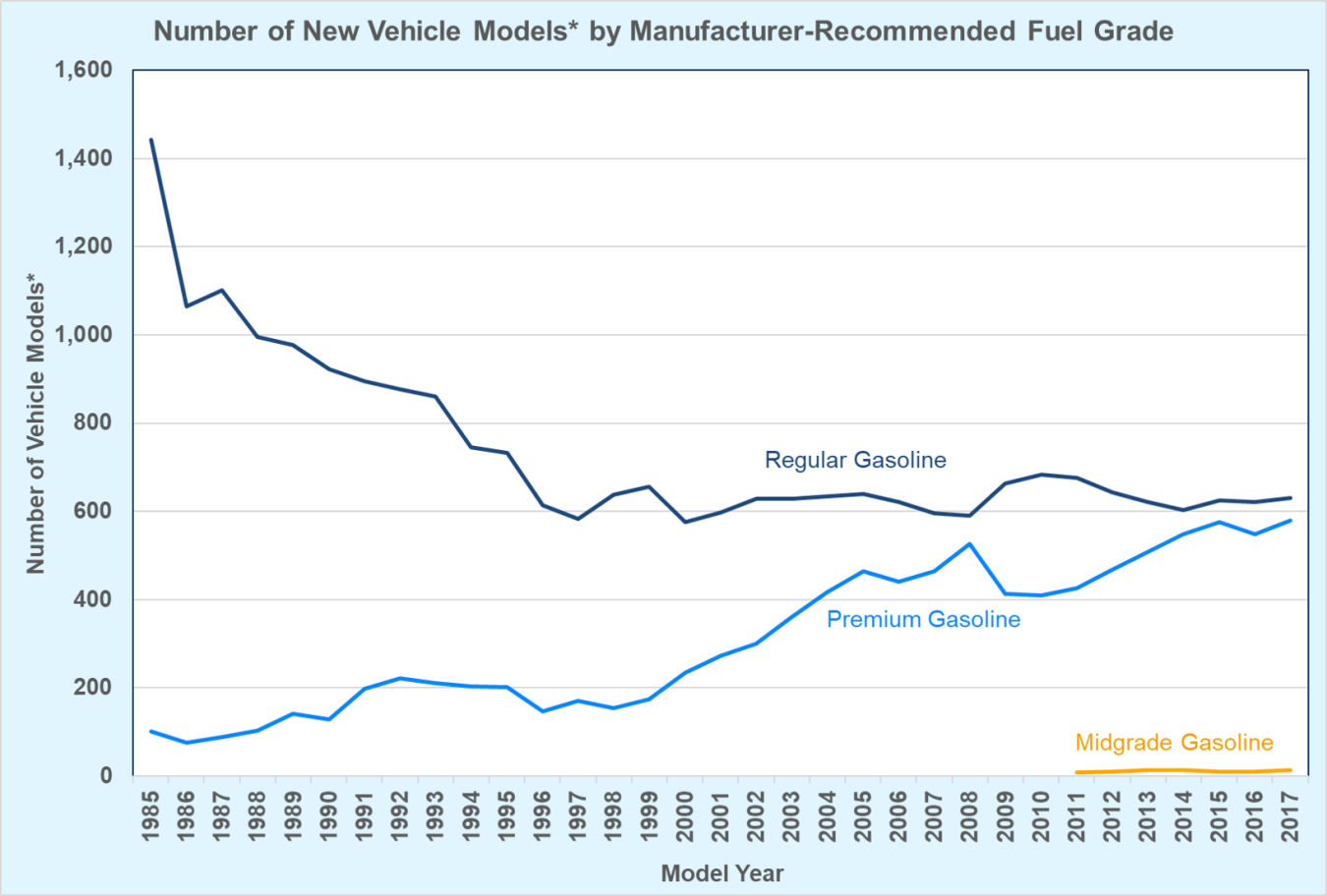In model year 1985, premium fuel was recommended for only 6.5% of new vehicle model configurations, but by 2017 that grew to 47.4%.
April 30, 2018In model year 1985, premium fuel was recommended for only 6.5% of new vehicle model configurations*, but by 2017 that grew to 47.4%. The increased use of turbocharging and higher compression engines that require higher levels of octane contribute to this trend. Prior to 2011 all models were listed as regular or premium gasoline. Beginning with 2011, midgrade gasoline was listed separately, although the number of models with midgrade recommended has remained low.

* "Number of New Vehicle Models" equates to the number of vehicle records in the Fueleconomy.Gov data files. In the data files, each make and model may have multiple configurations (engine, transmission, etc.) that are listed separately.
Notes:
- The manufacturer-recommended fuel grade was selected by the manufacturer at the time of certification.
- The term "Premium Gasoline" includes both premium recommended and premium required for all years shown.
Sources: U.S. Department of Energy and U.S. Environmental Protection Agency, Fuel Economy Guide data files, accessed May 18, 2016 and March 7, 2018.
MotorWeek, "Goss' Garage: Octane Rating," YouTube Video, 3:31, September 20, 2016.

